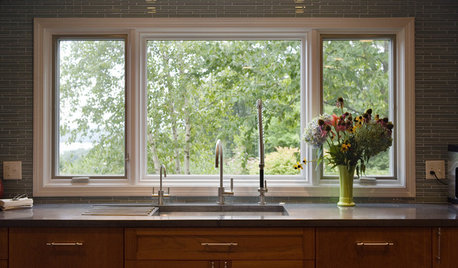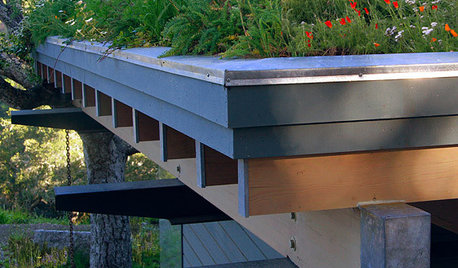how to install cellulose insulation
hollyhouse
18 years ago
Related Stories

MATERIALSInsulation Basics: What to Know About Spray Foam
Learn what exactly spray foam is, the pros and cons of using it and why you shouldn’t mess around with installation
Full Story
WINDOWSContractor Tips: How to Choose and Install Windows
5 factors to consider when picking and placing windows throughout your home
Full Story
EARTH DAYHow to Install a Green Roof
Covering a roof with low-maintenance plants has benefits beyond just beauty. Get the details here
Full Story
MATERIALSThe Most Popular Roofing Material is Affordable and Easy to Install
Asphalt shingles, the most widely used roof material in the U.S. are reliable and efficient, and may be right for you
Full Story
GREAT HOME PROJECTSHow to Install Energy-Efficient Windows
Learn what Energy Star ratings mean, what special license your contractor should have, whether permits are required and more
Full Story
FENCES AND GATESHow to Install a Wood Fence
Gain privacy and separate areas with one of the most economical fencing choices: stained, painted or untreated wood
Full Story
GREEN BUILDINGInsulation Basics: Natural and Recycled Materials
Consider sheep’s wool, denim, cork, cellulose and more for an ecofriendly insulation choice
Full Story
GREEN BUILDINGEcofriendly Cool: Insulate With Wool, Cork, Old Denim and More
Learn about the pros and cons of healthier alternatives to fiberglass and foam, and when to consider an insulation switch
Full Story
REMODELING GUIDESCool Your House (and Costs) With the Right Insulation
Insulation offers one of the best paybacks on your investment in your house. Here are some types to discuss with your contractor
Full Story
GREEN BUILDINGInsulation Basics: Heat, R-Value and the Building Envelope
Learn how heat moves through a home and the materials that can stop it, to make sure your insulation is as effective as you think
Full StoryMore Discussions









redhouse
bungalowbees
Related Professionals
East Islip Kitchen & Bathroom Designers · Everett Kitchen & Bathroom Designers · Freehold Kitchen & Bathroom Designers · Leicester Kitchen & Bathroom Designers · Redmond Kitchen & Bathroom Designers · Schenectady Kitchen & Bathroom Designers · Southbridge Kitchen & Bathroom Designers · Broadlands Kitchen & Bathroom Remodelers · Clovis Kitchen & Bathroom Remodelers · Glendale Kitchen & Bathroom Remodelers · Rancho Cordova Kitchen & Bathroom Remodelers · Wilson Kitchen & Bathroom Remodelers · Cloverly Architects & Building Designers · Palmer Architects & Building Designers · Bell Gardens Architects & Building Designersappletnc
chuckr30
appletnc
scrad750
appletnc
appletnc
kevinw1
kurtronix
bozo_boxer
terryr
julieanne76
sharon_sd
petermn4